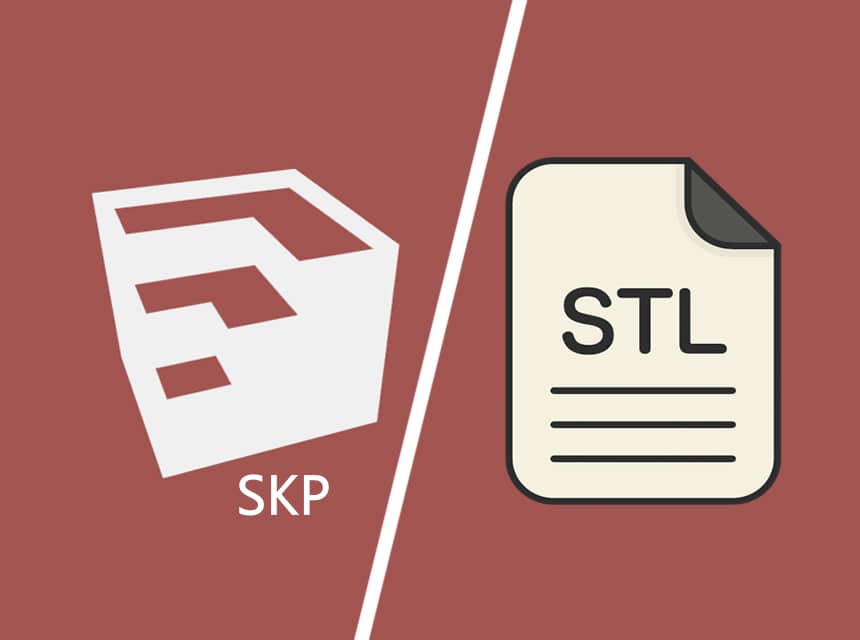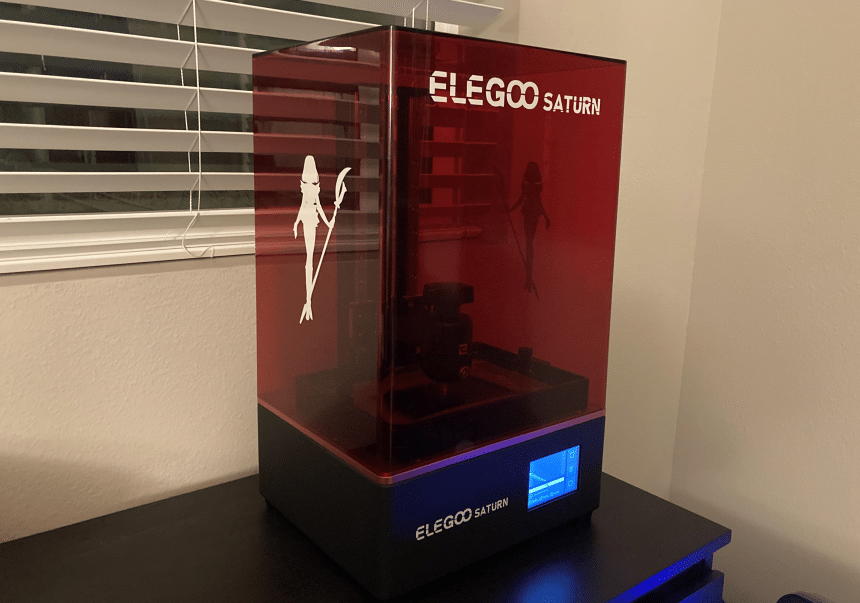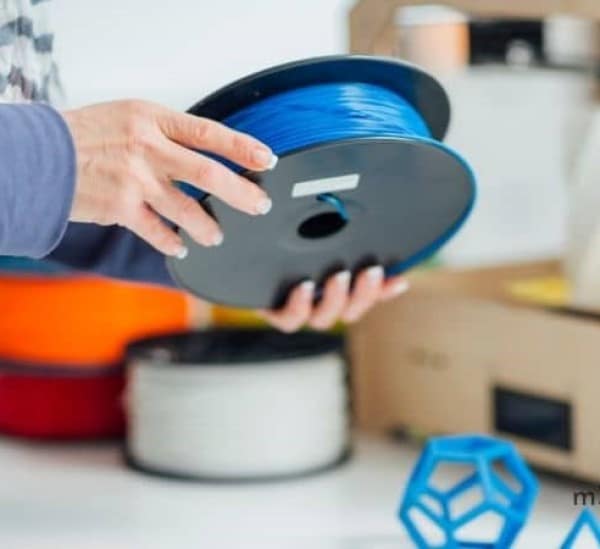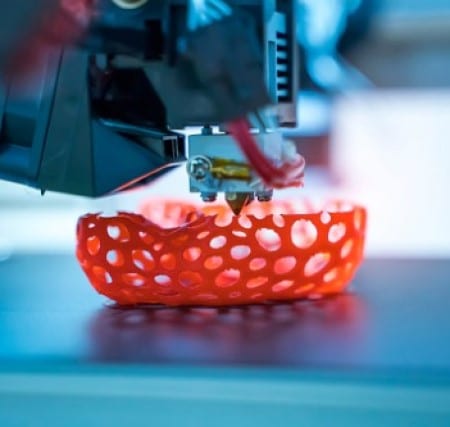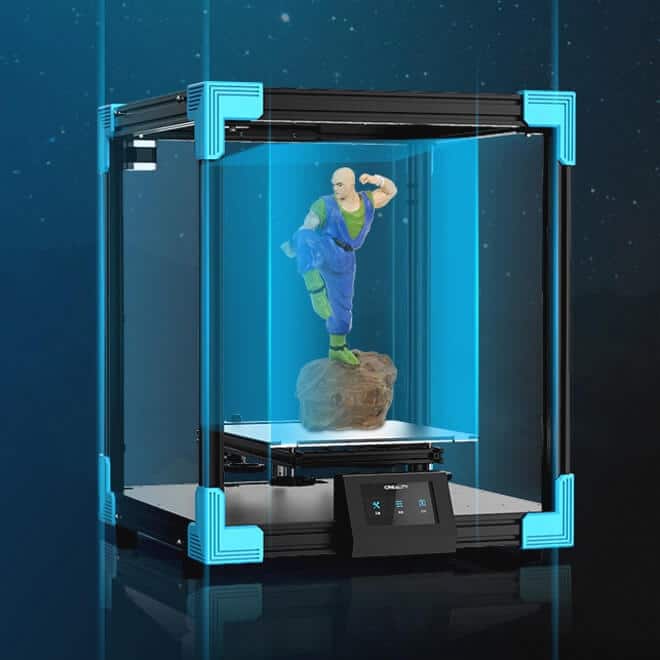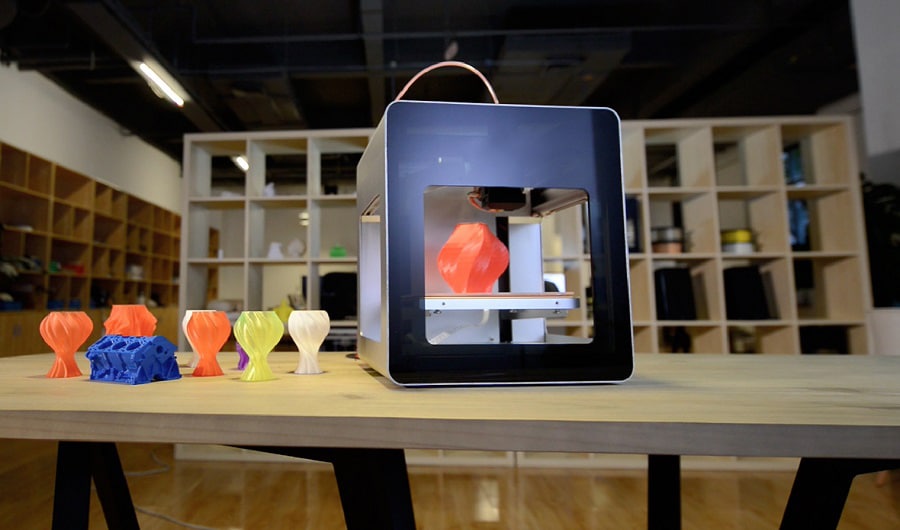

3D printing is fun! It allows you to breathe life into exciting projects and is a great way to spend your spare time. We, however, noticed that even though many people were interested in 3D printing, few of them went ahead and bought printers. Why? Because of the misinformed perception that 3D printers are expensive.
This is why we set out to review 8 of the best 3D printers under 400 dollars. We have chosen durable, versatile printers that work with a variety of filaments, and have impressive features which work well for experts as well as novices. Based on that, the Monoprice Voxel gets our Editor’s Choice.
Other features: 1.75 mm filament, auto-leveling, 8Gb of internal memory
Monoprice has gained a reputation for manufacturing some of the most reliable 3D printers, and the Voxel 3D Printer is no different. It has a ton of features that accommodate both beginners and experts and comes with a large build volume. This 3D Printer has some similarities with the FlashForge Finder, including the cubic shape and a responsive touch screen functionality. It prints at a speed of 10 mm to 100 mm every second which quite frankly doesn’t match up to some of the models on this list.
The Monoprice Voxel 3D Printer is a plug-and-play device that’s perfect for educational institutes and homes because it comes in an enclosed frame. This frame helps it maintain consistent internal temperatures, making it perfect for temperature-sensitive filaments such as ABS. The Voxel 3D Printer also comes with a filament sensor that indicates when your filament has run out and automatically pauses the machine. It resumes printing activity once you replace the filament.
Other features: 1.75mm filament, 0.4 mm nozzle, unique magnetic printing platform
The R QIDI TECHNOLOGY i Mate 3D Printer simplifies printing technology and is easy to set up. It’s also sleek, chic, well-built, and is extremely easy to operate. Its structure and all the components, including touch screen, power supply, CNC machining parts, and motors are all industrial grade, so you can rest assured that this machine will last you for a long time. This 3D Printer guarantees high quality and precise printing, it’s more stable and prints at 30% more speed compared to previous models.
Perhaps one of the features that sets the R QIDI TECHNOLOGY i Mate 3D Printer apart from the rest is its unique magnetic printing platform. It’s highly durable compared to plastic or glass platforms, can be used multiple times without breaking, and comes equipped with 9 special magnets that are temperature resistant. This 3D Printer can rise in temperatures from 0 to 50 degrees in around 2 minutes. It also comes with the proprietary QIDI slicing software that allows you to choose 2 modes; normal and expert. The normal mode is great for beginners, while the expert mode is best suited for experienced users.
Other features: Matrix UV light source, 2K High Resolution, air filtration system
Anycubic is known for its FDM 3D printers, and the Photon S is one of the most user-friendly models in the market. It has a large 2.8″ color TFT touchscreen that’s highly responsive & intuitive, making it easy for you to control the settings. This 3D Printer also has an auto-leveling feature that makes your work considerably easy. It comes with a carbon air filtration system that efficiently eliminates dust and pollen, making it perfect for small spaces, including offices.
The Anycubic Photon S 3D printer is one of its first DLP technology-based printers, and it’s no wonder that it’s creating a buzz in the 3D printing community. It has a larger print space and allows you to print models at incredible speed. In the original Photon S mode, the Z-axis has a wobbling issue, and Anycubic seems to have solved this problem making the Photon S more stable.
Other features: Resume printing function, carborundum glass platform, 4.3-inch color screen
The Creality Ender 3D printer is highly impressive and has a printing speed of 180mm per second, which is incredible for such a low-budget device. It guarantees accuracy during printing thanks to its ±0.1mm precision and comes with a 0.4mm nozzle diameter with a layer thickness of 0.1 to 0.4mm. This 3D Printer has a large build volume of 220 by 220 by 250mm and uses a 1.75mm PLA filament. It also leverages fused deposition modeling technology and is equipped with a heat build plate that ensures smooth print material and easy extrusion.
This 3D Printer is an upgrade from the Creality Ender 3, which, when it hit the market, wowed consumers by how efficient and affordable it was. The manufacturer later upgraded to this model, which we must admit doesn’t disappoint. It balances all the important features, including design, performance, user interface, and price.
Other features: 1.75 mm filament, 0.4 mm nozzle, LCD screen
All factors considered, the JGAURORA Upgraded A5S 3D Printer is one of the best 3D printers under $400 in the market. It’s the perfect DIY kit and has a sleek design and a large build volume. This model has a 0.1 to 0.3 mm. Layer resolution and prints at an average speed of 150 mm per second with a 0.4 and 1.75 mm nozzle diameter. It also has a USB port connectivity feature.
The JGAURORA A5S 3D printer is an upgrade from the A3 version. The manufacturer took customer feedback into consideration on their previous models and created this model that has a larger printing area and a 2.3-inch full-color touch screen. This 3D Printer also has a power recovery feature that pauses the printing process every time the filament runs out, or there’s a power outage. It also comes partially assembled and doesn’t require technical expertise to put the rest of the components together.
Other features: dual Z-axis motors and dual Y-axis tracks, titan direct extruder, dual fans
If you’re looking for a low-budget printer that doesn’t compromise on quality and is perfect for an office environment or school, then you need not look further than the ADIMLab Gantry Pro 3D Printer. This device provides unbeatable performance and delivers amazing and precise models. It comes fully assembled, so all you have to do is take it out of the box and work on the calibration process that only takes about 20 minutes. This model has a large 3-inch display screen that’s highly responsive, a head glass print bed, and a 4GB SD card. It also has a comprehensive manual to help you assemble and calibrate it with ease.
The ADIMLab Gantry Pro 3D Printer is best suited for beginners and intermediate 3D printers, preferably those in an office setting. It has a printing speed of 120mm per second and a nozzle and filament diameter of 0.4mm and 1.7mm. This model comes with a free PLA filament for testing.
Other features: 0.069 filament, 3.5-inch full-color touchscreen; Wi-Fi, USB, and flash drive connectivity
If you’re looking for an all-around 3D printer that balances out all the important elements, is easy to use, and is highly affordable, then you can’t go wrong with the FlashForge Finder. This amazing machine previously cost over $500, and the fact that you can now get it for less than $350 is incredible. The FlashForge Finder is encased by a plastic, PLA, and wood casing that keeps it well-protected but doesn’t get in the way when you’re printing. This casing also makes it kid-friendly. The FlashForge Finder has a 3.5-inch touch-operated interface at the top, which is highly responsive and easy to navigate. It’s also user-friendly and works better than rudimentary knobs that are common in most affordable 3D printers.
This 3D Printer has been made with hobbyists and educators in mind, as it’s affordable, easy to use, and is designed for immediate use. It’s a plug-and-play device that allows you to start printing objects in under 30 minutes.
The scope of 3D printing has increased, and currently, according to BBC Trusted Source 3D printing used in 'successful' ankle replacement surgery Surgeons have used 3D printing to successfully carry out an ankle replacement operation on an 82-year-old patient. www.bbc.com , surgeons have successfully used 3D printers to model parts for ankle surgery. If you’re thinking of embracing 3D printing as a hobby, the chances are that the high prices of 3d printers have you rethinking your decision. Well, based on the above reviews, it’s clear that you can get a great model for less than $400. We have compiled a simple buying guide to help you through the purchasing process.
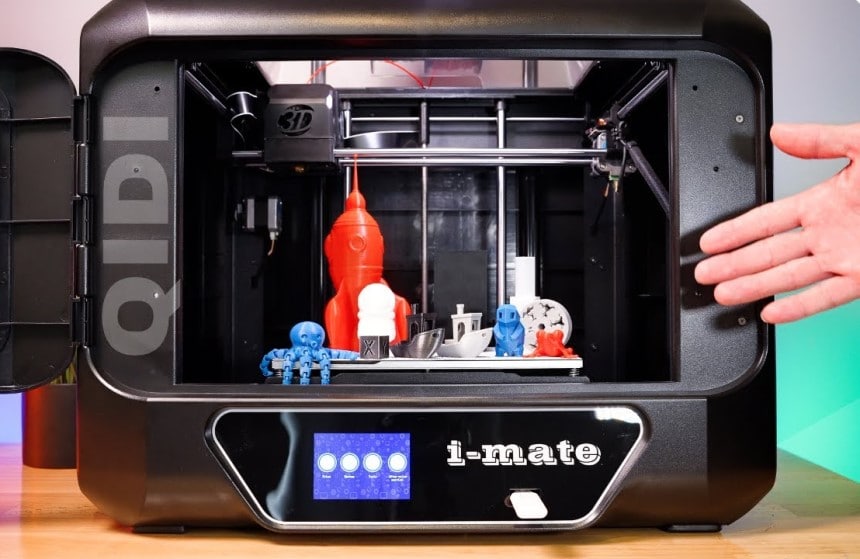
If you need a 3D printer with a $400 budget, you may have to compromise on some features. The Good news is that there are still some decent models in the market and you will definitely find one that suits your needs. Here are some of the features you should expect from a 3D Printer Under $400.
The possibilities of 3D printing are needless, which is why it’s no surprise that more people are embracing it as a hobby. In fact, according to CNN Trusted Source The world's first 3D-printed neighborhood is being built in Mexico for families living on $3 a day | CNN Business A giant 3D printer built two houses in an impoverished, rural part of Mexico last week, breaking ground on what will be the first 3D-printed neighborhood in the world. www.cnn.com , there’s a 3D-printed neighborhood under construction! While the above models can’t build a house, you can use them for small-scale projects, including creating tiny figurines. All of them balance out the most important features, which is highly impressive.
From the above list, it’s clear that there’s a wide variety of 3D printers under $400. How do you make the best purchasing decision? Here are the top factors you should consider.
The main point of buying a 3D printer is so that you can create models that have depth and volume. There are 9 main print technologies, and you should make your decision based on your most preferred method. The most common one in budget models is FDM that is highly effective and forms models using an extruder.
If you enjoy experimenting with different print filaments, then it would be unwise to buy a model that only accepts one filament type. For instance, the Creality Ender 3 V2 Upgraded 3D Printer only accepts PLA filaments which is great if you love it. However, the Da Vinci Jr Pro Wireless 3D Printer can use PLA, tough PLA, PETG, wood, alloy steel, leather, and plastic, giving you more options to work with.
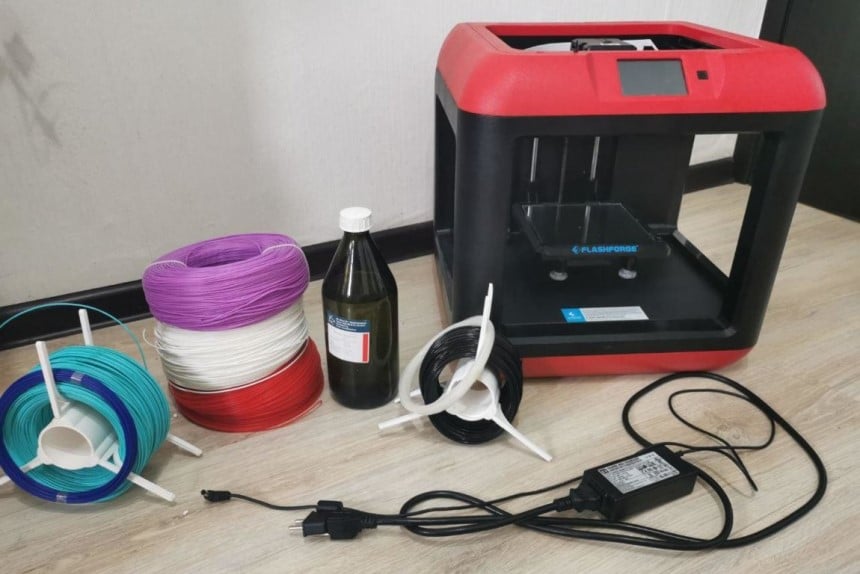
Go for a 3D printer that’s highly precise and accurate. This ensures that you print models that are close to the digital design. And let’s face it, where’s the fun in creating inaccurate models?
The build area is basically a sheet on which you build your 3D model. The bigger it is, the more space you have to work with, and the larger the models you can create. On average, the smallest build volume you should go for is 5 by 5 by 5 inches.
The speed of the Printer is highly determined by how fast the intruder moves and impacts the overall quality of your model. The faster the printing speed, the more models you can create. This element is, however, affected by the complexity of your designs and the printing material being used.
The layer thickness varies based on the printing material, and the lower it is, the longer you’ll take to create 3D objects of a particular height.
The layer thickness is essentially the number of layers you need to create your 3D model. It impacts the overall printing time and printing speed.
There are multiple software in the market for 3D printers, all of which are engineered to give you an exceptional printing experience. While most of the 3D printers on the list are compatible with external software, the R QIDI TECHNOLOGY i Mate 3D Printer only uses the QIDI slicer, which is hard to navigate.
There are 2 main types of connectivity: USB and Wi-Fi. You should go for a model that offers you both, but you should note that USB connectivity is highly reliable. With wireless connections, your printing process could be halted by Wi-Fi interruptions.
The dimensions and weight of a 3D printer determine its portability. If you plan on transporting your device frequently, go for a small and compact model that isn’t bulky.
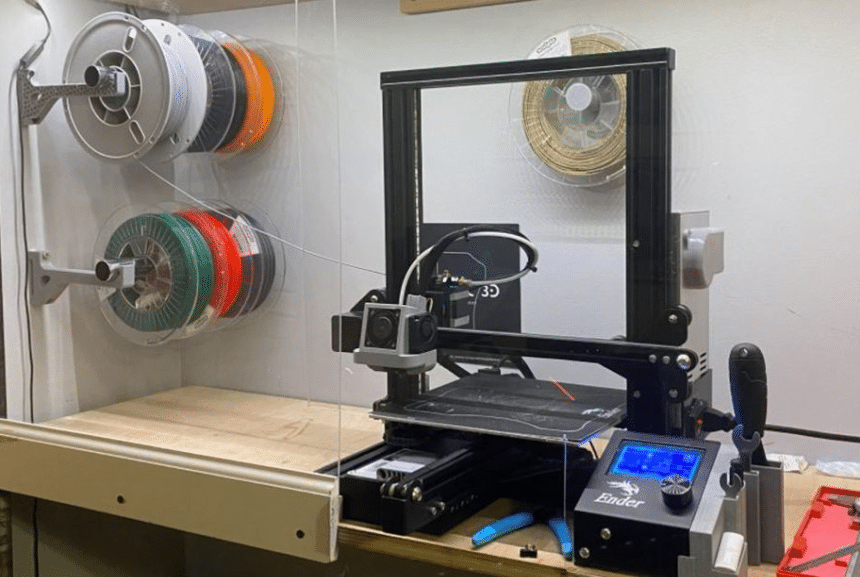
Even though the above review features the best 3D printers under $400, you should note that most models range between $150 to thousands and dollars. The choice should boil down to your budget and the features that you’re willing to compromise on.
Some of the other features you should consider include;
If you’re looking for the best 3D printers under 400, the above review is a great place to start. Our top pick the Monoprice Voxel 3D Printer, is a premium option and is as reliable as it is efficient. It has a large build volume and can accommodate the needs of both experts and beginners. Nest is the R QIDI TECHNOLOGY i Mate 3D Printer, which can use different types of printing filaments, but you have to compromise on compatible software. The third best 3D printer under 400 on our list is ANYCUBIC Photon S which uses Resin, steel, aluminum, and paper printing material and has a 2K High Resolution. It uses LCD-based SLA printing technology.
